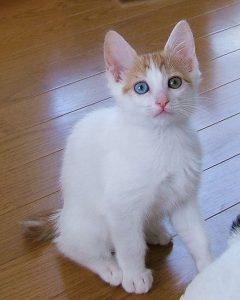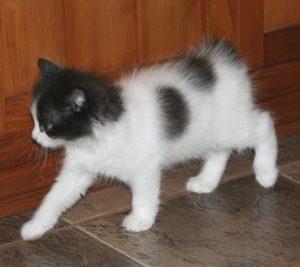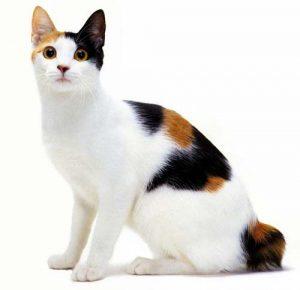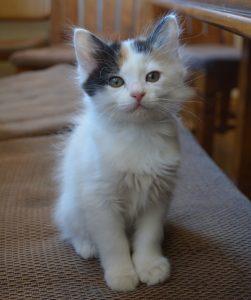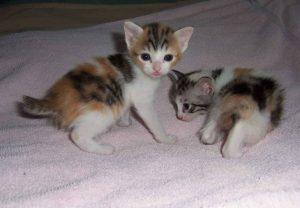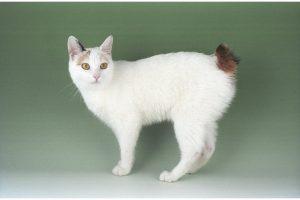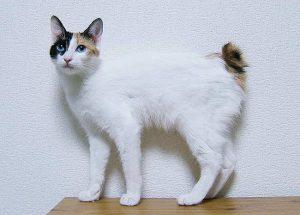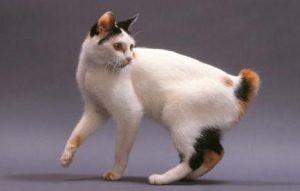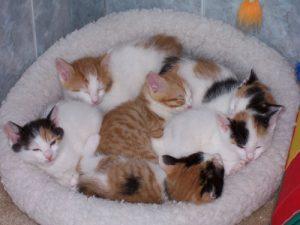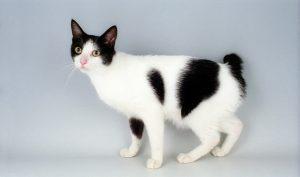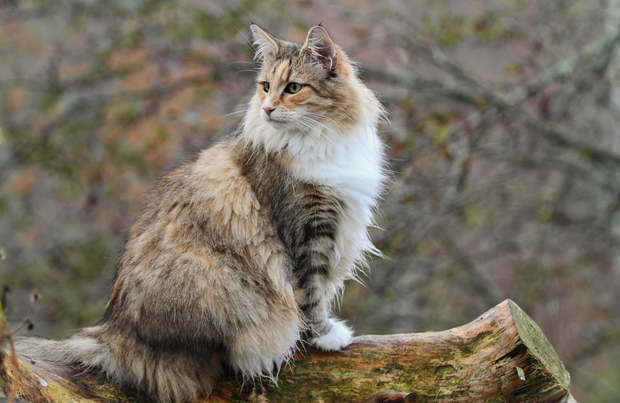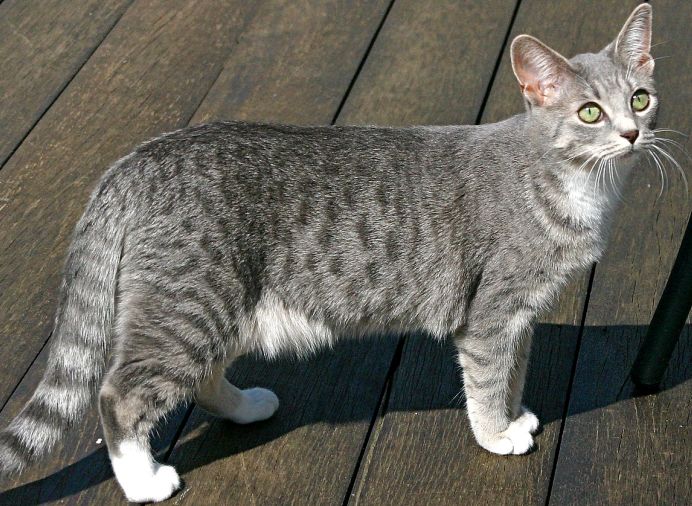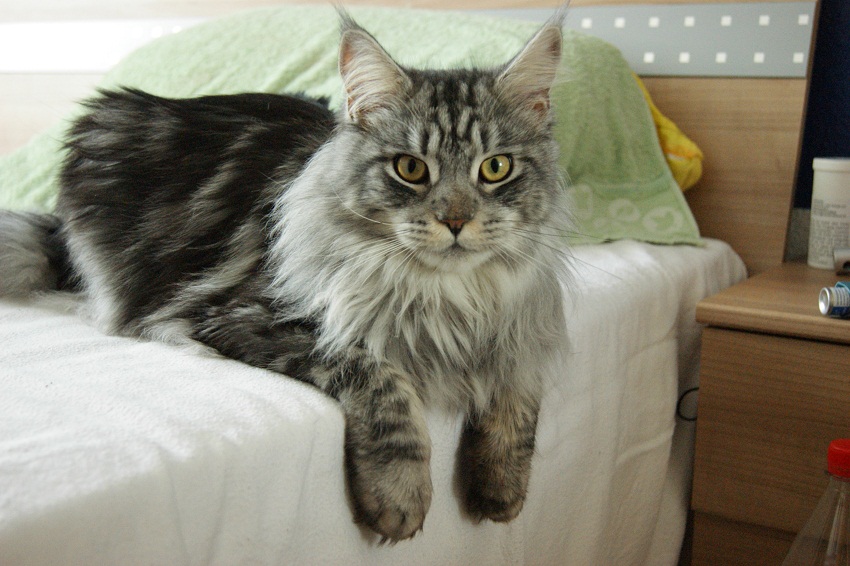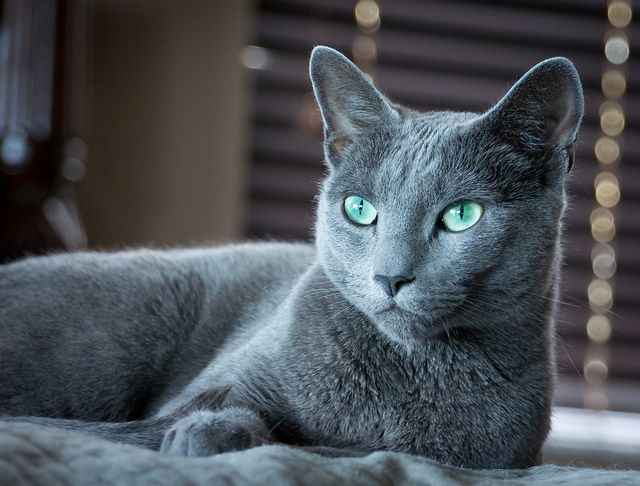Japanese Bobtail
The Japanese Bobtail is a rare breed of domestic cats native to Japan. Primarily, this cat is popular for their bobbed tail, very much like the tail of a rabbit. Although found in Southeast Asia as well, they have been known to the Japanese people for centuries and have even been seen in their traditional art and lore. They are energetic and intelligent and are loved by cat fanciers around the globe. Covered with either a short or a long coat, these cats are found in almost all possible cat colors, but the calicoes with a predominantly white coat are mostly sought after by the Japanese people.
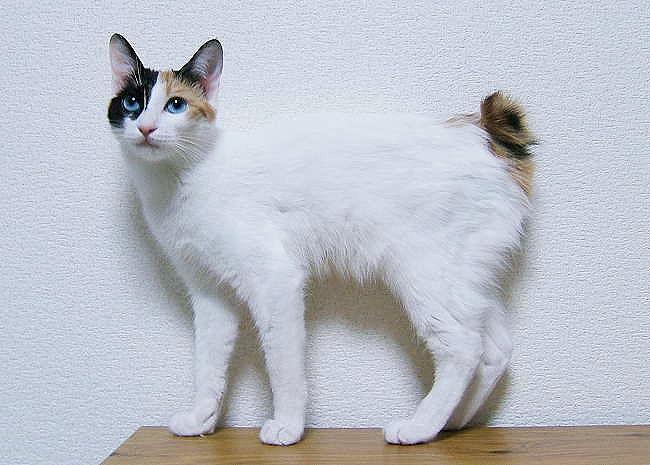
Japanese Bobtail 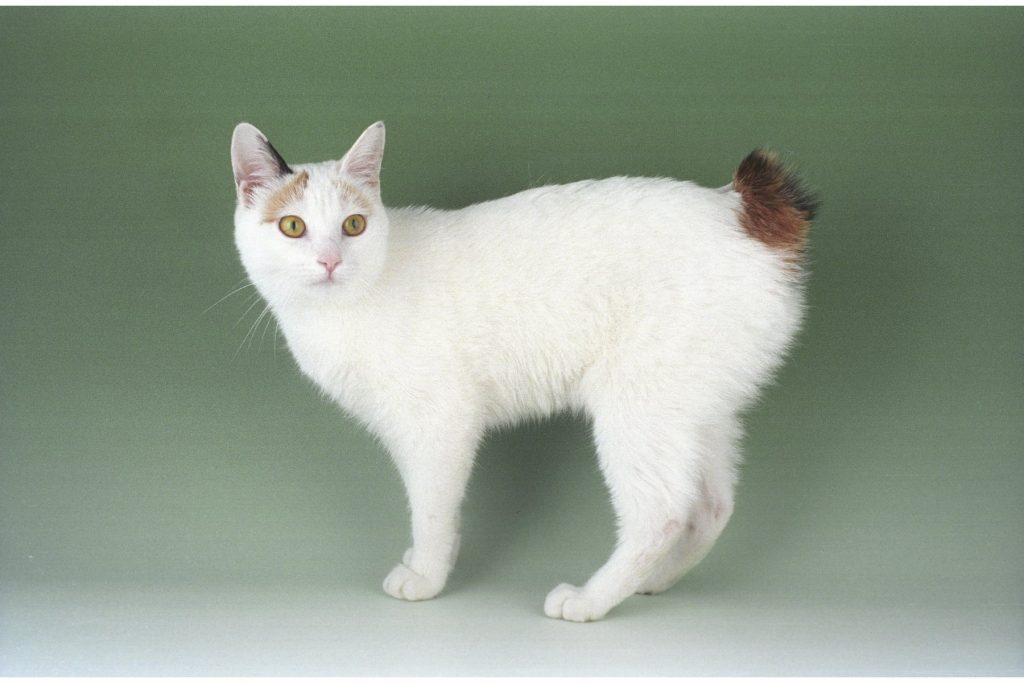
Japanese Bobtail Images 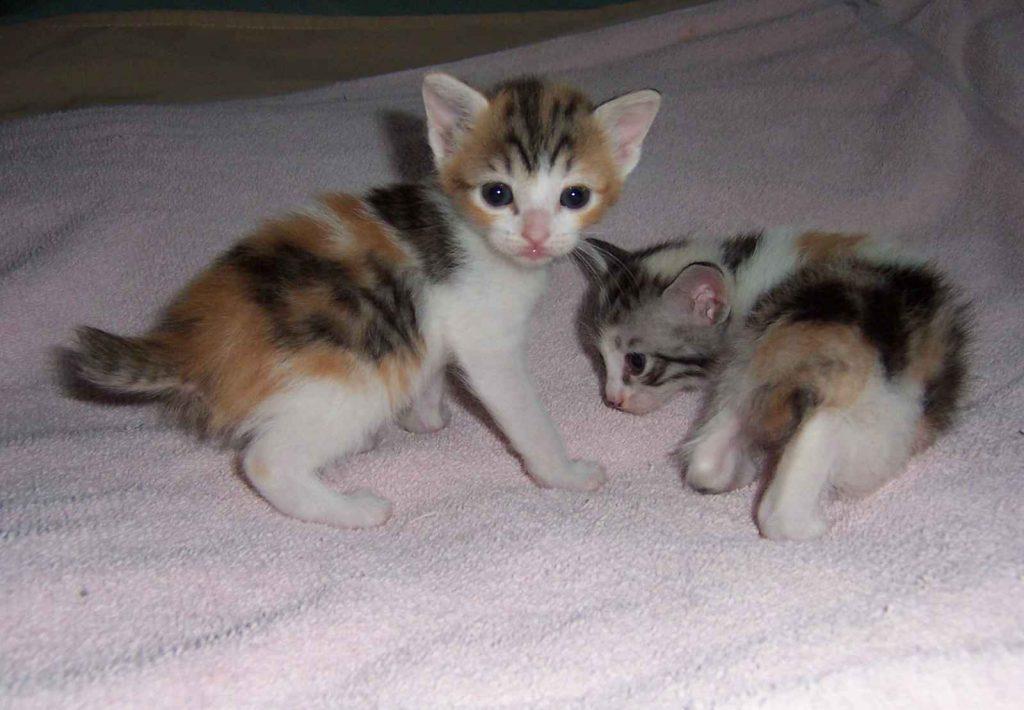
Japanese Bobtail Kittens 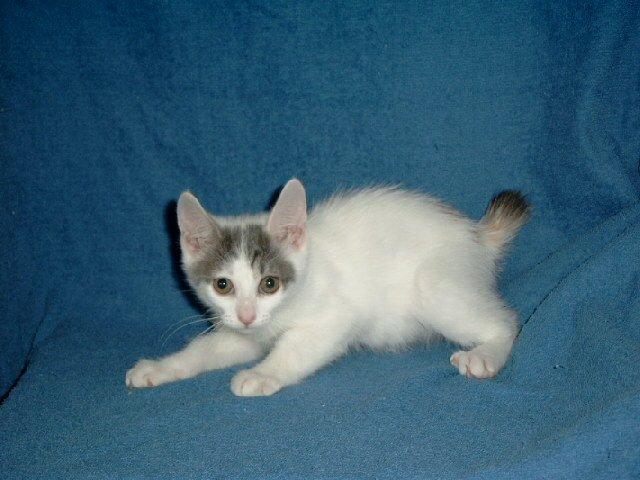
Japanese Bobtail Kitten Images
Quick Description
Physical Appearance & Size
| Weight: | 7-10 pounds |
Colors & Patterns
| Coat Type: | Long, short, silky, soft, straight |
| Coat Colors: | Red, tan, ruddy, black, white, brown, calico and combinations |
Other Characteristics
| Also known as: | Japanese Truncated Cat |
| Life Expectancy (Lifespan): | 15-16 years |
| Litter Size: | 5 kittens (average) |
| Lap Cat: | No |
| Personality Traits: | Active, clever, lively, loyal, social, playful |
| Shedding: | Moderate |
| Good with Children: | Yes |
| Hypoallergenic: | No |
| Vocalization: | Yes |
| Country of Origin: | Japan |
History
The Japanese Bobtails had arrived in Japan almost 1000 years ago from the Asian continent, suggests a theory. It was back in 1602 that the silkworms in Japan faced a threat by the rodents. Silk being an integral part of Japanese culture, the crisis turned out to be a big concern to the authorities. Soon after, the Japanese authorities issued a decree that all domesticated cats must be set free so as to deal with these pests. Eventually, buying and selling of these cats became illegal, and the Japanese Bobtail became the “street cats” of Japan.
The Japanese Bobtail has been mentioned innumerable times in folklores, legends, etc., and has been associated to a lot many fairy tales, myths, and superstitions.
In 1968, a woman named Elizabeth Freret was the first to introduce Japanese Bobtail to the Western Hemisphere. Later in 1976, the Cat Fanciers’ Association accepted the shorthair variety for Championship status. The longhair variety was recognized in 1993.
Temperament and Personality
The loyal and affectionate Japanese bobtail can be an excellent addition to your family. These cats are extremely intelligent and active that is often portrayed by their interactive ability and extrovert nature. They are comfortable interacting with kids as also with other fellow pets, including dogs.
The bobtails love toys and are ready to play at any time and with anything. Be it in the water with its play-mouse or with you in the garden, fetching the Frisbee. They are profoundly curious, and when not playing, they would stroll around your house peeping at every nook and corners.
The cats are ever busy. They would never sit quietly for long but seek for their next adventure. They would climb on your cupboard, or even your shoulders to get a better view of what is going on around.
These cats are talkative. They would interact with people with their short chirps or frequent meows by their songlike voices.
Care
The Japanese bobtail keeps its coat by its own grooming and hence do not need any special grooming. However, the longhaired version needs a little more attention. Nevertheless, both the coat types would cherish the attention of their masters being combed by a soft brush a couple of times a week.
These cats are generally healthy and live a long life. Still it is advisable to take your cat for an annual health checkup with special emphasis on dental, liver and kidney. A yearly vet check is necessary, especially when they are 8 to 9 years old. This should ward off general health issues common to the domestic felines.
Training
The clever cat would easily understand what you want and expect from it, and would adapt itself accordingly just to get your attention and affection. Teach them tricks and reward them with dry kibbles every time they succeed. Train them socialize well to help it get accustomed to your family life.
Diet/Feeding
Though, the Japanese Bobtail has no breed-specific dietary needs, they are known to have an affinity for fish over other foods. Additionally, the longhair variety would be benefitted from a special diet that would reduce the formation of hairball inside their stomach.
Interesting Facts
- The first book written by a Westerner about Japan’s flora and fauna was by a German doctor Engelbert Kaempfer, which was around 1701. In this book, the author gave a narration describing these cats:
“There is only one breed of cat that is kept. It has large patches of yellow, black and white fur; its short tail looks like it has been bent and broken. It has no mind to hunt for rats and mice but just wants to be carried and stroked by women.” - The ‘maneki neko’ (meaning the “beckoning cat” or the “inviting cat”) is an image of a Japanese Bobtail cat sitting with its front paw raised, and has been considered as a good-luck charm among the Japanese worldwide. They often keep a statue of this figure in the front of their stores or homes.
- As of 2013, there are a lot many Japanese Bobtail breeders, most of which are based in USA, and a few in Europe, and at least one in Japan, but still, the breed continues to remain rare.

